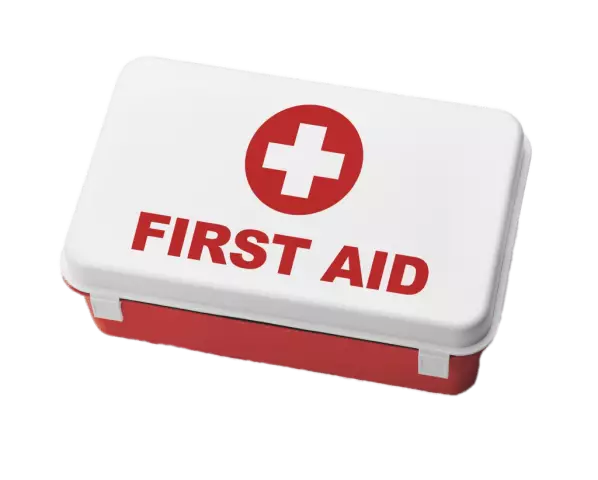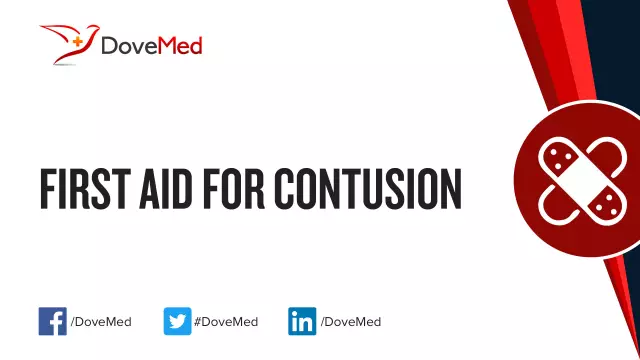- Author Rachel Wainwright [email protected].
- Public 2023-12-15 07:39.
- Last modified 2025-11-02 20:14.
Heel contusion: symptoms, first aid, home treatment
The content of the article:
- The reasons
- Symptoms
- Diagnostics and first aid
-
How to treat a bruised heel
- Dolobene gel
- Theiss ointment with larkspur
- Indovazin gel
- Badiaga
- Oral preparations
- Treatment with folk methods
- Video
A bruised heel is the most common cause of pain in the heel area. With such an injury, mechanical damage to the ligaments, bursa, heel bone or tendons is possible.

With a bruised heel, soft tissue damage occurs
A bruise is a closed soft tissue injury. ICD-10 code (international classification of diseases) - S90.3 "Contusion of the other and unspecified part of the foot." With an uncomplicated course and timely treatment started, the prognosis is favorable.
The reasons
Heel injury after a jump can occur as a result of a failed landing. Also, injury can occur for the following reasons:
- hitting a hard surface;
- unsuccessful fall;
- Running or walking barefoot on uneven surfaces
- falling on the heel area of a heavy object.

Injury to the heel area is possible when running on uneven surfaces
Heel contusion is often associated with other types of traumatic injury:
- closed: closed fracture, dislocation, sprain, inflammation of the bursa;
- open: open fracture, wound.
Symptoms
With a bruised heel, soft tissues are most often affected: muscles, subcutaneous tissue, skin, blood vessels, nerves, ligaments of the arch of the foot. As a result of rupture of blood vessels, bruises appear, and damage to the nerves leads to pain.

A bruise is manifested by a pain syndrome that worsens when walking
The following symptoms may indicate this type of injury:
- pain in the heel that worsens with walking and decreases with rest. The maximum pain is felt in the center of the injury. Pain depends on the degree of pressure on the nerve endings. In some cases, immediately after the injury, the pain is not too pronounced, but it gradually increases, and the discomfort when walking persists for a long period;
- bruising at the site of the injury. The cause of its formation is multiple ruptures of small vessels. The poured blood soaks the tissues, and especially the loose fatty tissue, which manifests itself as a bruise on the skin. If blood exfoliates tissue, hematomas form. As they dissolve, due to the destruction of hemoglobin, the bruise changes color to purple, and then to yellow;
- damage to the skin, abrasions or wounds. Their severity depends on the traumatic factor.
Diagnostics and first aid
If, after an injury, a severe sharp pain is felt in the heel area, then you should immediately seek the advice of a traumatologist. In order to exclude a fracture of the calcaneus, an X-ray must be taken. For cracks in the bone, the doctor applies a cast.
When providing first aid, measures are taken to reduce swelling and pain. Since pain depends on hemorrhage and pressure on nerve endings, appropriate measures must be taken.
You also need to drink an anesthetic drug (Analgin, Diclofenac, Ibuprofen, Nimesil). If in the area of injury there is a violation of the integrity of the skin, they are treated with antiseptics. Initially, the wound is washed with hydrogen peroxide, then Iodine, Zelenka or Fukortsin are applied and a bandage is applied.
How to treat a bruised heel
In most cases, the patient receives treatment for the injury at home. Full recovery occurs within 7-14 days. In this case, a person should limit physical activity as much as possible.
In order to get rid of the bruise, reduce pain and eliminate edema, ointments and gels based on heparin, troxerutin, diclofenac, nimesulide are used. Combined agents are also used, which include both components that improve blood circulation and anti-inflammatory pain relievers.
Dolobene gel
Dolobene gel contains heparin, dimethyl sulfoxide and dexpanthenol. The drug has a local anesthetic effect, quickly eliminates edema and relieves inflammation. The product enhances tissue regeneration and promotes resorption of bruises.

Dolobene relieves pain and inflammation
The gel is applied in a thin layer to the affected area 2-4 times a day. For severe bruises, you can apply a bandage with Dolobene. For this, the agent is applied in a thick layer. After most of it is absorbed, and the alcohol that is part of the drug has evaporated, cover with an air-permeable dressing.
Do not apply the gel to damaged skin and open wounds, as it contains isopropyl alcohol, which can cause severe pain reactions. It is also not recommended to use the drug in the treatment of children. Do not use the product during pregnancy and lactation.
Theiss ointment with larkspur
The composition of the ointment includes larkspur tincture, ethanol and vitamin E. Biologically active substances contained in the comfrey root have an anti-inflammatory and analgesic effect, and also improve tissue regeneration. The product quickly removes swelling and bruising.

Dr. Taiss's ointment with larkspur has anti-inflammatory and analgesic effects
The ointment is applied to the bruised area with a thick layer 2-3 times a day. At night, the site of application is covered with a bandage. How much the drug needs to be used depends on the severity of the injury and the response to therapy.
Indovazin gel
The composition of the gel Indovazin includes such active substances as indomethacin and troxerutin. This combined remedy has a pronounced analgesic, anti-inflammatory, venotonic and anti-edema effect and allows you to quickly eliminate bruising and reduce swelling.

Indovazin is effective when necessary to reduce edema and hematoma
The gel is applied to the affected area with a thin layer 2-4 times a day and rubbed in with light massage movements. The duration of treatment is no more than 10 days.
You can not use the drug to treat children, pregnant and lactating women. It is not recommended to apply the gel to abrasions and wounds.
Badiaga
Badiaga is a powder that consists of dried and crushed colonies of freshwater sponges. It has anti-inflammatory, local irritating and analgesic effects. Skin irritation with silicon needles leads to increased blood circulation, which in turn allows you to quickly get rid of bruises and reduce pain.

Badyaga has a local irritating effect
Dry powder Badyagi is diluted with warm water to the consistency of thick sour cream and applied to the affected area. After drying, it is washed off. The procedure is carried out once a day until the condition improves.
Oral preparations
If severe pain persists, in addition to drugs for external use, tablets are prescribed that have an analgesic and anti-inflammatory effect:
| Name | Description |
| Ibuprofen (Imet, Nurofen, Gofen, Ibuprom) | It belongs to the group of non-steroidal anti-inflammatory drugs. Quickly relieves pain. Take 2-3 times a day after meals |
| Nimesulid (Nimid, Nimesil, Affida Fort) | Available in the form of tablets or powder for oral administration. It has a pronounced analgesic effect. In order to reduce pain, the drug is taken twice a day after meals. Before use, one packet of powder is dissolved in 100 ml of water |
| Diclofenac (Dicloberl, Rapten) | It has anti-inflammatory and analgesic effects. Take 1 tablet or capsule 1 to 3 times a day, depending on the dosage |
Treatment with folk methods
To treat a bruised heel at home, not only drugs are used, but also folk remedies. You can reduce swelling and pain from injury with a cabbage compress. To do this, knead the sheet until juice appears on the surface. Then it is applied to the affected area and fixed with a bandage. The sheets are changed regularly until the swelling subsides.
On the third day after injury, an alcohol compress can be used to relieve pain and speed up recovery. To do this, a small piece of fabric is impregnated with alcohol and applied to the heel. Cover with plastic on top and put on a sock. The compress is left overnight. The procedure is carried out until the signs of injury disappear.

Salt baths can be used to relieve pain.
Salt baths will help to cope with swelling and pain. To do this, dissolve 4 tablespoons of sea salt in three liters of warm water. The procedure is carried out daily for 15 minutes until the condition improves. It is not recommended to do baths in the first two days after injury.
If the improvement does not occur for a long time, the swelling extends to the entire foot, and any leg movements are accompanied by unpleasant sensations, it is necessary to seek repeated advice from a traumatologist.
Video
We offer for viewing a video on the topic of the article.

Anna Kozlova Medical journalist About the author
Education: Rostov State Medical University, specialty "General Medicine".
Found a mistake in the text? Select it and press Ctrl + Enter.






